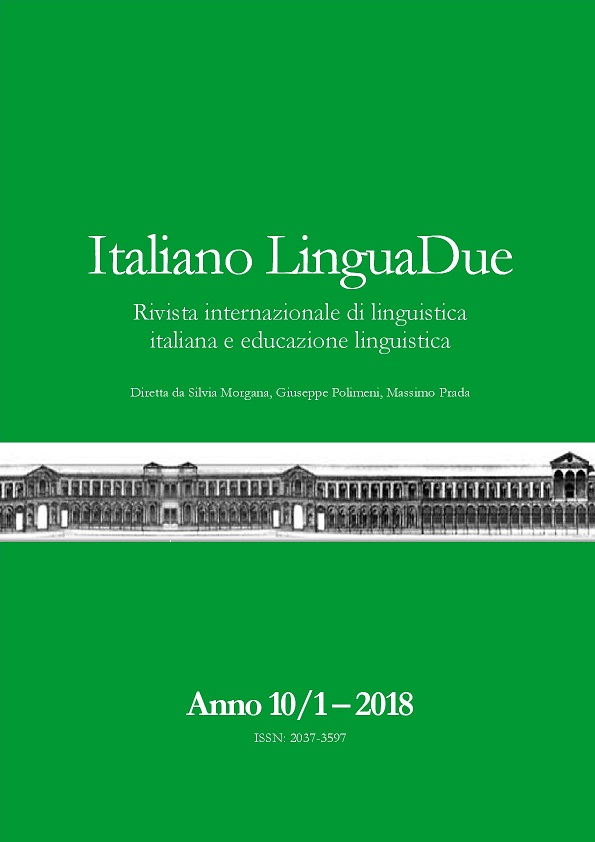LA DIDATTICA DELL’ITALIANO TRA LINGUA E LETTERATURA NELLE GRAMMATICHE POSTUNITARIE
DOI:
https://doi.org/10.13130/2037-3597/10953Abstract
Il contributo analizza con quali modalità gli autori di grammatiche scolastiche postunitarie abbiano messo in pratica il ruolo di modello educativo, patriottico e linguistico della letteratura. Per farlo, l’autrice si avvale di un piccolo campione di dieci testi editi dopo l’Unità e prima della Riforma Gentile. Il punto di vista privilegiato per l’analisi è quello delle esercitazioni, in quanto gli autori attingono alla lingua letteraria per esercizi ed esempi. Il lavoro prende in esame la struttura delle grammatiche e il canone letterario proposto in esse; poi si concentra sul tipo di operazione che si richiede di fare negli esercizi utilizzando il testo letterario e infine fa riferimento agli altri tipi di testo presenti negli stessi esercizi. Dall’analisi così effettuata emerge che nelle grammatiche postunitarie brani tratti da opere letterarie (testi in prosa e in versi, appartenenti a diversi registri e prodotti nell’arco di cinque secoli) si mescolano a materiale linguistico inventato, in un composito panorama. Chiude l’intervento una breve riflessione sull’utilizzo dei testi letterari nell’insegnamento attuale della lingua italiana.
Teaching italian language and literature using post-unitarian grammar books
This paper analyzes how the post-unification authors of school grammar books put the role of an educational, patriotic and linguistic model of literature into practice. To do so, the author uses a small sample of ten texts published after the Unification and before the “Gentile” Reform. The analysis focuses on the exercises, since the authors drew on literary language for exercises and examples. The structure of grammars and the literary language proposed in them is examined; then it focuses on the types of operations required in the exercises based on the literary texts and finally considers the other types of texts present in the same exercises. The analysis shows that in the grammar books, extracts from literary works (texts in prose and verse, belonging to different registers spanning over five centuries) are mixed with invented linguistic material, in a composite panorama. Finally, there is a short reflection on the use of literary texts in current Italian language teaching.




